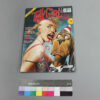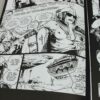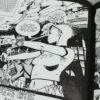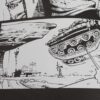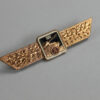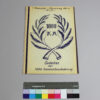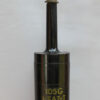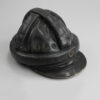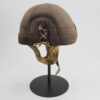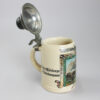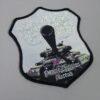The comic “Tank Girl”
Inventory number: DPM 6.2050
Tank Girl – girls and women who are interested in tanks have often heard this name. It is the title of a British comic series by Jamie Hewlett and Alan Martin, which began in 1988 in the underground comic magazine Deadline. Most Germans are only familiar with the character through the film adaptation by Rachel Talalay in 1995, the same year a German version of the comic was published by Feest Comics.
The comic “Tank Girl” is set in post-apocalyptic Australia in the year 2033, in which the main character and “Tank Girl” Rebecca Buck has bizarre adventures with Booga, a kangaroo mutant. A tank serves as their home, vehicle and weapon. Sometimes, however, it also appears animated with dog-like characteristics. The tank is referred to as the MK II, but is only loosely inspired by real tanks and its design changes throughout the series. The drawing style inspired by the punk movement is also evident in the anarchistic narrative structure, which in some cases contains only narrative fragments rather than a self-contained plot.
At the end of the 20th century, post-apocalyptic settings were in fashion and countless works dealt with the future vision of a world after the year 2000. The films were dominated by male heroes such as in Mad Max, but there were also action heroines such as Sarah Connor in Terminator (from 1984). However, the comic medium – unlike film – offers more unconventional approaches that are detached from the real feasibility of the images. As the main character of an underground comic, Tank Girl did not have to cater to mass tastes and seems to have detached herself from any social norms.
The comics are bursting with sex and violence and Tank Girl’s lust for both often gets her into trouble – but it is also one of her strengths, which she uses to assert herself in this post-apocalyptic world. Her hypersexualized portrayal is broken by the fact that her appearance and behaviour contradict common beauty norms at the time the comic was created: with a shaved head, punk outfits and vulgar language, she embodies the rebel of the 1990s and thus captured the zeitgeist in Great Britain.
Tank Girl grew in popularity as a character beyond the comics and became a symbol of protest: for example, there was a T-shirt motif of her at demonstrations against Margarete Thatcher’s “Clause 28” in 1988, which banned the positive public portrayal of homosexuality. The tank girl aesthetic reached the general public when brands such as Wrangler and Vivienne Westwood used it for their image campaigns as “rebellious” fashion, a popularization that reached its temporary peak with the 1995 film adaptation.
This text was automatically translated using AI.
Object of the month
(short) stories from the depot
Unfortunately, many objects cannot currently be shown in the exhibition for conservation reasons. Here you will find unusual objects and exciting stories of special pieces from the depot

